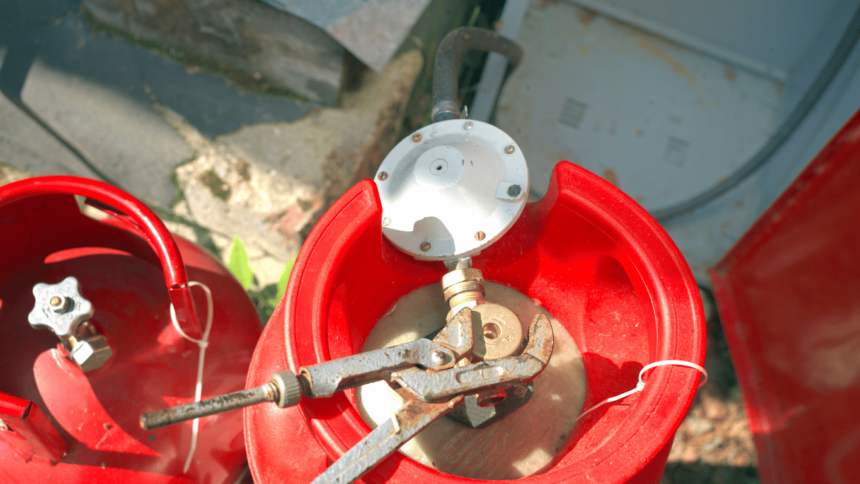LPG (Liquefied Petroleum Gas) appliances offer an efficient and versatile energy source, popular in many homes and businesses. Whether it’s for cooking, heating, or powering appliances, LPG provides a reliable alternative to traditional fuels. However, the installation of these appliances requires specific expertise to ensure safety and functionality. In this guide, we’ll explore everything you need to know about LPG appliance installation, from understanding the types of appliances to repair and maintenance tips. We’ll also touch on the importance of professional installation and the steps involved in keeping your LPG appliances in top condition.
Understanding LPG Appliances and Their Installation
What Are LPG Appliances?
LPG appliances are devices that run on Liquefied Petroleum Gas, a versatile fuel source. These appliances include stoves, ovens, heaters, boilers, and even some refrigeration units. LPG is an excellent choice for off-grid homes and businesses because it is portable and can be stored in tanks. LPG kitchen appliances such as gas stoves and ovens are particularly popular in the catering industry due to their precise heat control and energy efficiency.
Why Choose LPG Appliances?
The reasons to choose LPG gas appliances over other fuel sources include better energy efficiency, lower emissions, and the ease of transport and storage. LPG burns cleaner than other fossil fuels, making it an environmentally friendly option. Whether you’re looking to install LPG heaters, stoves, or water boilers, they provide a cost-effective solution for households and commercial establishments.
Professional LPG Appliance Installation
One of the most crucial aspects of adopting LPG technology is ensuring proper installation. A certified professional should always carry out LPG appliance installation to prevent gas leaks, which can be dangerous. The installation involves safely connecting the appliance to the LPG gas supply, securing proper ventilation, and ensuring all safety standards are met.
Step-by-Step Guide to LPG Appliance Installation
Site Inspection and Preparation
Before installing LPG appliances, a professional should inspect the area where the appliance will be placed. The inspection includes checking for proper ventilation, ensuring the location is safe for gas use, and measuring the space to ensure the appliance will fit appropriately.
Connecting the LPG Supply
The next step is connecting the appliance to the LPG supply. Whether using portable gas cylinders or a centralised gas tank, proper piping is essential for the safe delivery of LPG to the appliance. This stage requires careful attention to prevent leaks and ensure the flow of gas is secure.
Testing the Appliance
Once the appliance is connected, it’s important to test it for functionality. This includes checking for any gas leaks and ensuring the appliance operates efficiently. The installer should check for proper flame characteristics, which indicate if the appliance is working correctly. This step is also crucial in ensuring energy efficiency.
Final Safety Checks
A final safety check is mandatory in the LPG appliances installation process. This includes making sure that carbon monoxide detectors are in place and functioning, verifying proper ventilation, and ensuring the appliance complies with all regulations.
Common Types of LPG Appliances
LPG Kitchen Appliances
LPG kitchen appliances such as gas stoves and ovens are known for their efficiency and precise temperature control. They are widely used in both homes and commercial kitchens. These appliances are favoured for their ability to provide instant heat, making cooking tasks easier and more efficient.
LPG Heaters and Boilers
LPG heaters and boilers are popular for both space heating and water heating. These appliances are an excellent alternative for homes not connected to the main gas grid, offering efficient and reliable heat sources during the colder months. Proper installation of these appliances ensures they run efficiently without leaks or disruptions.
LPG Refrigerators and Freezers
Less common but still highly useful, LPG-powered refrigerators and freezers are often found in off-grid or mobile homes. These appliances are energy-efficient and reliable, offering a practical solution for those in remote locations.
The Importance of LPG Appliance Repair and Maintenance
Regular Inspections for Safety
While LPG Appliance Installation is crucial, ongoing maintenance and repair are just as important. Regular inspections should be scheduled to ensure the system’s integrity. This includes checking the gas connections, burners, and overall appliance condition to ensure it remains safe and operational.
Identifying Common LPG Appliance Issues
Some of the common issues that arise in LPG appliances include blocked burners, pilot light malfunctions, and gas leaks. Recognising these issues early can help prevent further damage and safety hazards. Hiring a professional for LPG Appliance Repair ensures that any issues are resolved quickly and efficiently.
Benefits of Timely Repairs
Timely LPG Appliance Repair not only extends the life of your appliance but also improves its efficiency. A malfunctioning LPG appliance could result in gas wastage, higher energy bills, and even hazardous situations. Repairs should be carried out by professionals who are well-versed in the specific requirements of LPG systems.
Safety Tips for LPG Appliances
Proper Ventilation
One of the most important aspects of LPG appliance safety is ventilation. Poor ventilation can lead to dangerous build-ups of carbon monoxide, which is harmful if inhaled. Ensure that all LPG appliances are installed in well-ventilated areas and that ventilation systems are checked regularly.
Regular Leak Checks
Frequent checks for gas leaks should be a routine part of owning an LPG appliance. Even the smallest gas leak can lead to dangerous situations, so it’s crucial to monitor your appliances closely and call a professional at the first sign of trouble.
Carbon Monoxide Detectors
Installing carbon monoxide detectors in areas where LPG gas appliances are used is another important safety measure. These detectors can alert you to the presence of harmful gases, ensuring you can act quickly to prevent accidents.
Conclusion
LPG appliance installation requires attention to detail, professional handling, and regular maintenance to ensure the safety and efficiency of the appliances. From kitchen stoves to heaters, LPG offers a range of energy-efficient and cost-effective solutions for both domestic and commercial use. Whether you’re installing a new appliance or looking for LPG appliance repair, always rely on professional services to ensure your system operates smoothly.
For expert LPG installation and repair services, trust Jones The Pipe to deliver top-quality, safe, and efficient solutions tailored to your needs.



